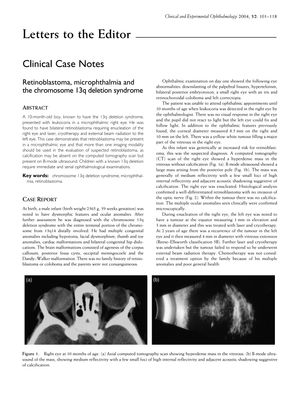Clinical Case Notes: Optical Coherence Tomography of Adult-Onset Foveomacular Vitelliform Dystrophy
February 2004
in “
Clinical and Experimental Ophthalmology
”

TLDR Multiple eye conditions were studied, highlighting the importance of various imaging methods for diagnosis, the vision side effects of drugs tamoxifen and Propecia, and the usefulness of optical coherence tomography for diagnosing and monitoring macular and retinal diseases.
In 2004, multiple case studies were conducted on various eye conditions and their potential causes. One study involved a 10-month-old boy with 13q deletion syndrome who developed bilateral retinoblastoma, emphasizing the importance of using multiple imaging methods for diagnosis. Two separate studies focused on the side effects of drugs, tamoxifen and finasteride (Propecia), on vision. The woman using tamoxifen experienced vision loss, which improved after discontinuing the drug. The man using Propecia for androgenic alopecia developed cataracts, which improved after discontinuing the drug and undergoing surgery. This was the first reported case of a Propecia-associated cataract. Another study discussed Lipoid Proteinosis, a rare disorder characterized by non-inflammatory, persistent papules on the skin and mucous membranes. Lastly, two clinical cases of adult-onset foveomacular vitelliform dystrophy (AOFVD) were presented, diagnosed using optical coherence tomography (OCT). Despite the resolution limit of OCT at the time, it was considered a useful technique for early diagnosis and monitoring of macular and retinal diseases.

